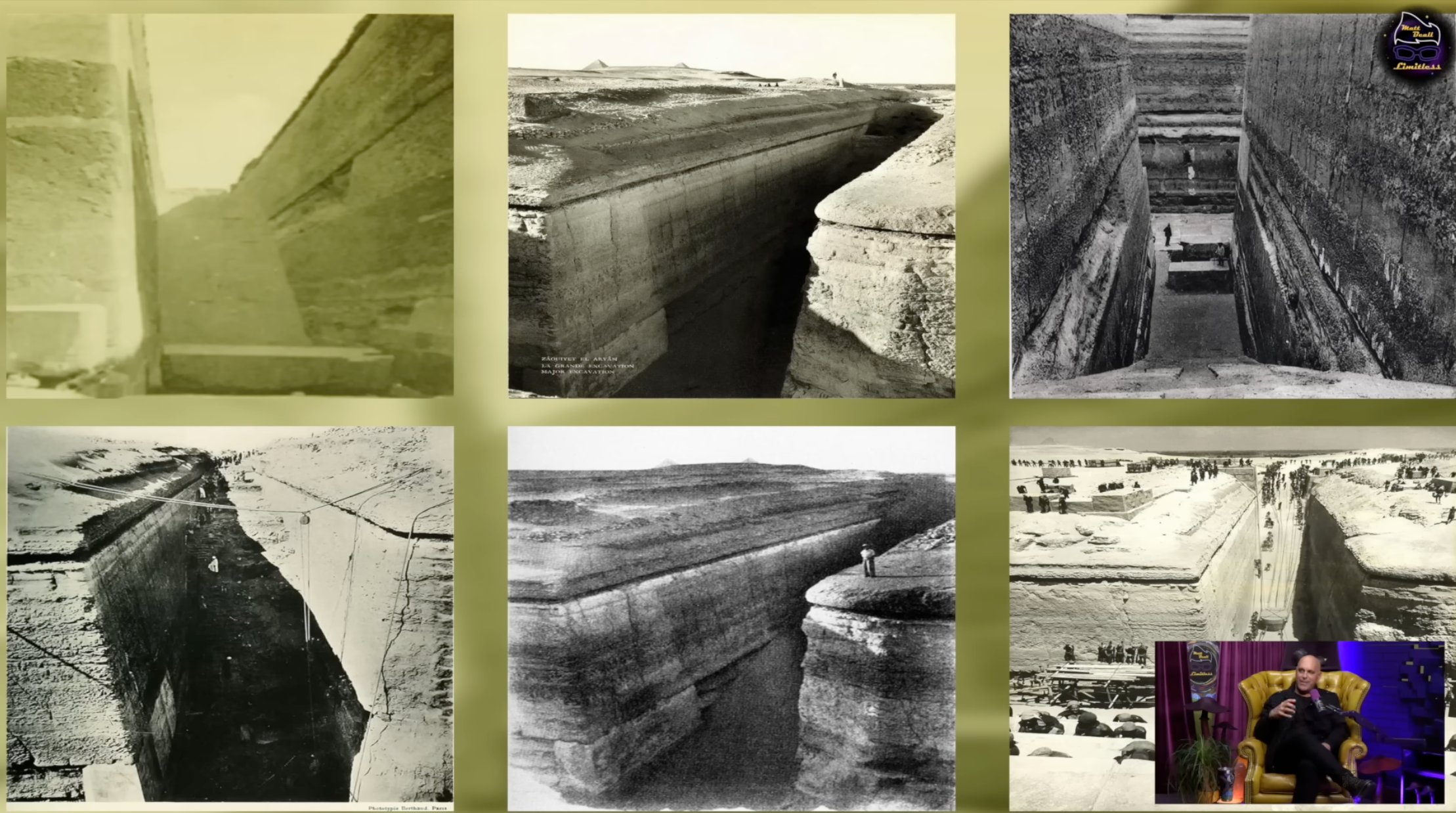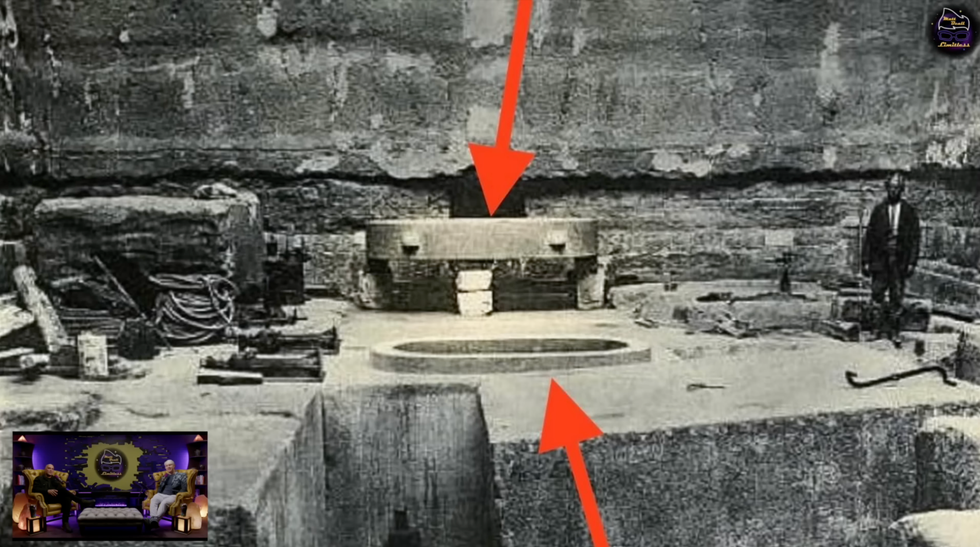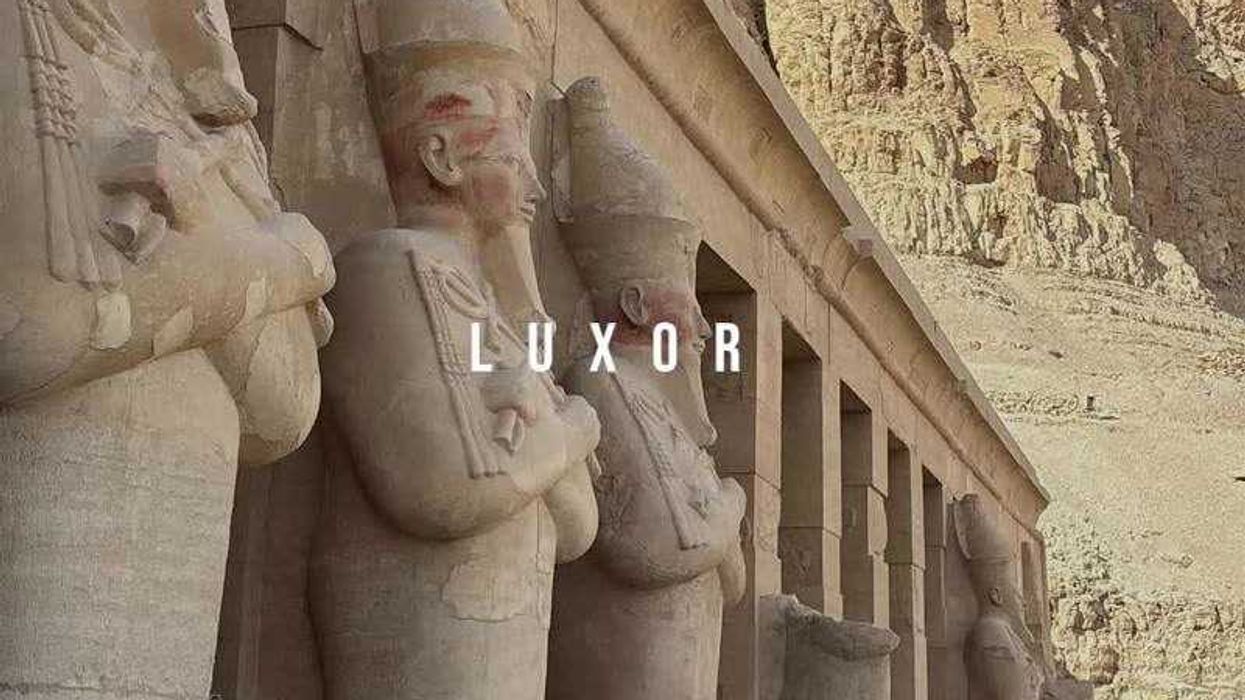Science & Tech
Sinead Butler
Oct 27, 2025
Ancient Wonders and Temples of Luxor Egypt Unveiled
BVIRAL / VideoElephant
There's even more mystery beyond the Pyramids of Giza... around three miles away at a site called Zawyet El Aryan, also described as Egypt's Area 51.
It has been blocked off for years by the military, but discussions continue to this day about what the site could tell us about Ancient Egypt.
Here's a breakdown of the history and debate surrounding this historical site.
Historical background

In the early 1900s, the site was excavated by archaeologist Alessandro Barsanti, who found a 100-foot-deep T-shaped pit carved into solid limestone and lined with granite blocks, estimated to be 15 feet long and 8 feet thick, weighing up to 18,000 pounds..
Barsanti noted a discovery of an oval vat with a fitted granite lid in the heart of one chamber, which contained races of an unknown substance which has been lost in time.
Fast forward to the mid-1960s, and the Egyptian military seized control of the site, meaning no further excavations or tours could take place.
Therefore, we only have Barsant's early excavations and photos to go off on the details of the site, only further prompting mystery and intrigue.
What was the site used for?
A popular belief among Egyptologists is that it is the site of an incomplete pyramid from the 3rd or 4th Dynasties; however, whether this is the case or not remains a mystery.
Given the site has huge granite floors, limestone walls and a sealed central vat, it led some to theorise that the incomplete site was built for ceremonial purposes or perhaps as an experimental foundation.
Although there are features researchers have highlighted, including graffiti in black and red ink found inside that reads "Seba", and while the full text and meaning remain unknown, some have interpreted to be the ancient Egyptian term for a 'gateway to the stars', 'star,' 'vital essence' or 'life force.'
As you can imagine, this site has prompted debate and discussions online, including on the Matt Beall Limitless podcast, where independent researcher Derek Olsen weighed in with his thoughts on the structure's purpose as a vessel for space or spiritually related exploration.

He reckons the graffiti is the ancient Egyptian word for 'gateway to the stars' and that the structure was built back in the day for space travel.
But mainstream scientists disagree; instead, they believe the graffiti was in reference either to the name of a builder or a figure from back in those ancient times.
The huge granite blocks used as flooring were discussed on Matt Beall's Limitless podcast as Beall and Olson speculated on their purpose for the structure.
"Why would you need a 10-foot-tall granite block on the floor?" Beall asked, and in response, Olson replied: "Right, when it's naturally limestone [on the ground]."
"How they fashion that the limestone walls are mindboggling."
Beall then added, "And why? What is the tub for? What would the original purpose of it be? Complete mystery, I guess, right?"
The tub Beall mentioned refers to the one found on the site with a granite lid, which measures 10 feet long, 7 feet wide, and 5 feet deep, indicating it was meant to be a closed container.
"We are seeing a theme of this huge granite floor and a lid-like structure," Olson said, referring to the Great Pyramid, the Serapeum and the Saqqara pyramid, which are all similar ancient Egyptian structures with granite boxes.
How to join the indy100's free WhatsApp channel
Sign up to our free indy100 weekly newsletter
Have your say in our news democracy. Click the upvote icon at the top of the page to help raise this article through the indy100 rankings.
Top 100
The Conversation (0)














